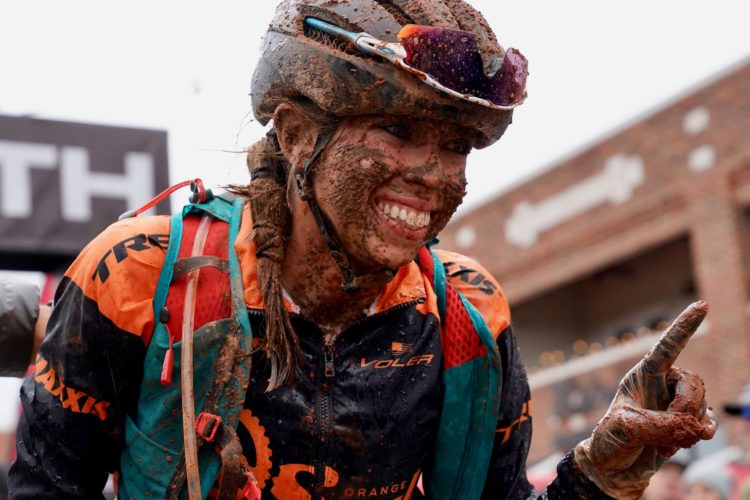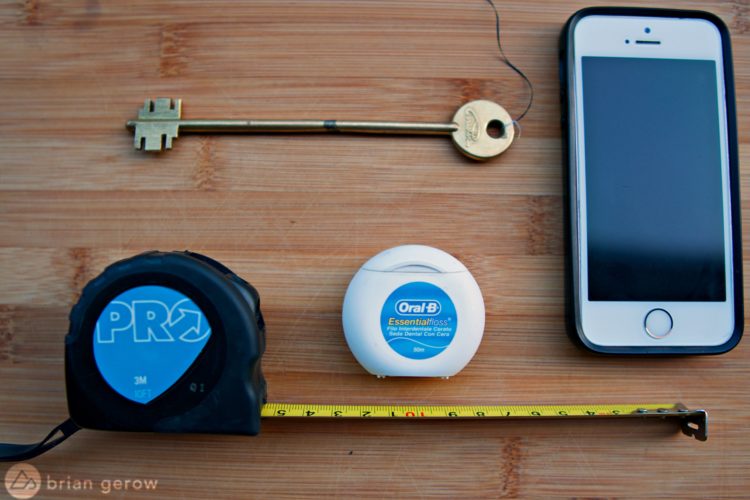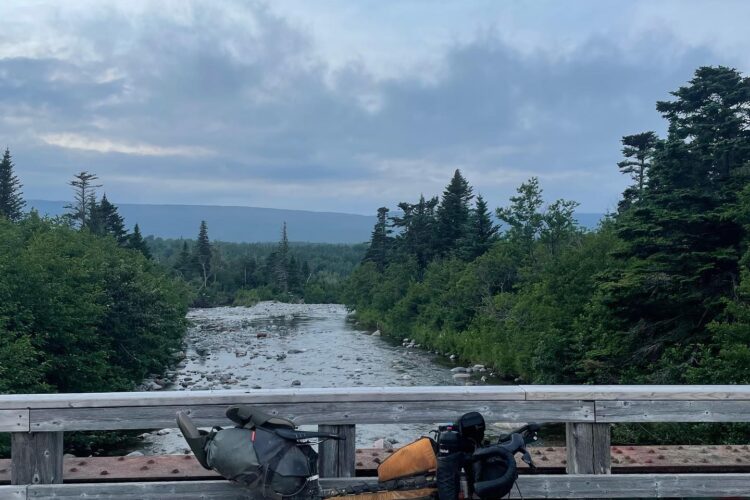 When I decided to train for a dirty century, I wanted to make sure my bike fit was completely dialed for long hours in the saddle. I’ve done live social media coverage of a few races for Eddie O’Dea, the most sought-after bike fitter in the state of Georgia, so I decided to give him a call and get both my road bike and the Superfly 100 (my race bike) properly fit and ready to go. Eddie, along with his wife Namrita, own 55Nine Performance, a professional bike fitting, coaching, and training company.
When I decided to train for a dirty century, I wanted to make sure my bike fit was completely dialed for long hours in the saddle. I’ve done live social media coverage of a few races for Eddie O’Dea, the most sought-after bike fitter in the state of Georgia, so I decided to give him a call and get both my road bike and the Superfly 100 (my race bike) properly fit and ready to go. Eddie, along with his wife Namrita, own 55Nine Performance, a professional bike fitting, coaching, and training company.
While I expected it to be an interesting experience, what I didn’t expect was how informative our time would be and how much I would learn about bike fitting and riding in the process. One of the main impressions I came away with is how important getting your bike fit by a professional bike fitter truly is. In the past, I thought bike fits were only for serious racers.

During our time, Eddie informed me that a pro bike fit is useful for anyone who rides a bike. As you’ll find out if you read on below, riding a bike with an improper fit can put a lot of wear and tear on your body. Even if you don’t ride very much, “[you’re] still pedaling for an hour, two hours, three hours, producing thousands of pedal strokes per hour,” said O’Dea. Even if you’re brand-new to the sport, “learning good technique on a well-fitting bike early on means that you don’t develop bad habits,” according to O’Dea.
Since I know a $200 bike fit might be a hard sell for many, I present to you the top 5 reasons that you should get a professional bike fit:
 1. Reduce the risk of injuries
1. Reduce the risk of injuries
“The most common injuries are from overuse, repetitive use,” according to O’Dea. These injuries occur when “forces that should be passed through the skeletal system get passed through the soft tissue” instead. Possible conditions that result include tendonitis, inflammation of the tendons, and tendeopathy, which is the death of cells in your soft tissue, resulting in scar tissue forming in your muscles.
Such overuse injuries are “the result of putting undue forces (tension, sheering, compression) into the soft tissue repeatedly.” When properly fitted on a bike, these undue forces are eliminated.
2. Increased comfort
Many riders coming in for their first bike fit, myself included, think that comfort and performance are mutually exclusive. I was surprised and pleased to learn that they don’t have to be. Basically, a professional bike fitter seeks to find the center of your range of motion for your body (appendages, joints, back, etc.) and they put you in the most neutral position. This position is both the most powerful and the most comfortable.
If you are experiencing pain on the bike, “discomfort would typically come from tension, sheering, and compression. By reducing those at the contact points as well as throughout the rest of the body, you get the performance benefit but the comfort comes with it,” said O’Dea. Of course, mountain biking is an inherently painful sport, but “discomfort should come from increased effort and not just pain. It should not come from numbness or pain in your joints.” You should not be experiencing any hotness, seering, or high heat. If you are, you should definitely see a professional bike fitter.
3. Increased physical performance
As I mentioned above, comfort and performance go hand-in-hand. “Working from your individual range of motion will allow [you] to get more power and less wear and tear on your body,” said O’Dea.
In order to get to the center of your individual range of motion, 55Nine Performance and other Wobble Naught-affiliated bike fitters take detailed measurements of your skeleton and your bike and input all the data into a software program. The software then spits out the ideal bike setup and using a combination of laser sights, measuring tapes, and levels, the bike fitter, in this case Eddie, will then set up your bike. After that, you hop on the bike and pedal, and if any changes need to be made, the bike fitter will make them.
Once the fit is complete, Eddie watches your pedal stroke and gives specific coaching on ideal body position. “This is one of the areas that sets us and WN Precision fitters apart is the ability to teach people techniques that will give them improvement,” said O’Dea. “Most bike fits don’t teach you how to move and pedal.” Indeed, many bike shop bike fits will drop a plumbline from your knee, take a few measurements and adjustments, and send you on your way. WN fitters such as 55Nine spend most of the “fit” time actually coaching, and they go as far as scheduling a follow up coaching session (included in the fit fee).
4. Faster recovery
This ties into number one above, but it seems obvious that “if you do less damage to the soft tissue, you’re going to recover better.” According to O’Dea, this is basic physiology. “If there are less tears to the connective tissues and less damage to the muscles there is less to recover from.”
5. It is difficult, if not impossible, to fit yourself on a bike
According to O’Dea, “our bodies are not wired to feel the subtleties and the changes of fit. We’re actually not wired to feel when we’re in the middle of the range of motion because there’s no feedback.” If you think about it, this makes a lot of sense. We only feel something, i.e. pain, when something is going wrong. When something isn’t wrong, we don’t feel pain. However, the absence of pain isn’t enough to tell you that you are actually in the middle of your range of motion. And since pain often doesn’t show up until you’ve been riding for a while, perfecting your bike fit by yourself is just a very difficult thing to do.
This circles back to my overall takeaway from my fit sessions at 55Nine. The reasoning and science behind what Eddie does with the fit are things I had never thought of before relating to anatomy and physiology. He tries to explain the reasoning using plaster anatomical models and three-dimensional computer models, but I only understood a portion of it. That’s okay, though, because I rely on Eddie to be the expert.
Additionally, the way Eddie goes about actually creating the ideal bike fit is so incredibly precise and scientific that I knew I was in the presence of a true professional. Normally when I set up my cockpit and seat, I just make my best guess based on experience. If something feels wrong, I adjust it a little bit. But I never get out a software program, laser sight, measuring tape, and level. I just don’t.
This is why there are people who specialize in bike fitting: it is a very demanding, scientific process that few of us have any reason to understand, let alone perfect. Especially for the average rider, once you get your one or two (or three) bikes set up properly, you won’t have to think about it until you buy your next bike! And if you’re buying a multi-thousand dollar dream bike, don’t you think you should invest a couple hundred more dollars to get it set up specifically for you?
Your Turn: Have you ever had a professional bike fit? What did you learn?
[see_also id=”5501″][/see_also]























30 Comments
Apr 24, 2014
May 9, 2013
May 10, 2013
Sooooo, I'd recommend looking for someone who has a good reputation and lots of happy satisfied customers, don't worry so much about the system they use.
May 10, 2013
As for fit systems, Eddie uses the Wobble Naught Precision system and recommends other WN fitters. They have fitters spread all across the country; you can learn more about WN on their website: http://www.wobblenaught.com/
But Dustin is right, there are definitely different fit theories and many different bike setup theories floating around out there!
May 11, 2013
Nov 26, 2013
May 11, 2013
In the past, I personally haven't noticed much of a difference in soreness and pain between different bikes, except for different saddles. A change in saddle can sometimes really be painful until I get used to it! However, I think small differences are magnified the longer you ride for, so in ultra-endurance events small changes can make a big difference!
May 11, 2013
Nov 26, 2013
May 12, 2013
Nov 26, 2013
May 9, 2013
Nov 26, 2013
May 9, 2013
The worst thing is finding out your frame is the wrong size and/or geometry for your body. I did a fitting with 55Nine before my hut-to-hut trip a few years ago and found out that my frame was probably a little too small. We got around it by installing a super long seat post but that's not ideal.
May 9, 2013
For my fitting I got a new pair of Specialized shoes (which I was planning on anyhow since my old shoes were toast), Drew recommended a different insole with a little more arch support. He also changed my cleat position, moving it back towards my heal. He moved my saddle down a little, and back a LOT - so much so I needed a setback post because the straight post I was using didn't have enough adjustment. He also looked at handlebar and controls position, making sure my brake levers were easily reached and whatnot. We didn't make any adjustments to my bars, but he said they were at the limit of my flexibility and I may need to raise them a touch, but to ride it some and see how it feels.
So the new position was a more aggresive position - I was further back from the bars, and more leaned forward with a flater back. IT ROCKED!! I noticed immediately I could put more power into the pedals, the new cleat position helped a lot there, my ankles and calfs were doing less work to stabilize my foot, so the larger muscles could really lay down the power. My knees track straight up and down now, they used to swing in towards the bike on the downstroke. I was also more comfortable on the bike, and have no more knee issues.
All in all my fitting process took somewhere between 3 and 4 hours. I HIGHLY recommend getting a good fit, those few millimeters of adjustment here and there really make a big difference.
May 9, 2013
May 9, 2013
May 10, 2013
Pretty much a certifiable badass.
May 10, 2013
Nov 26, 2013
May 11, 2013
May 11, 2013
May 10, 2013
Nov 26, 2013
May 10, 2013
May 12, 2013
May 11, 2013
May 10, 2013
May 10, 2013
May 10, 2013